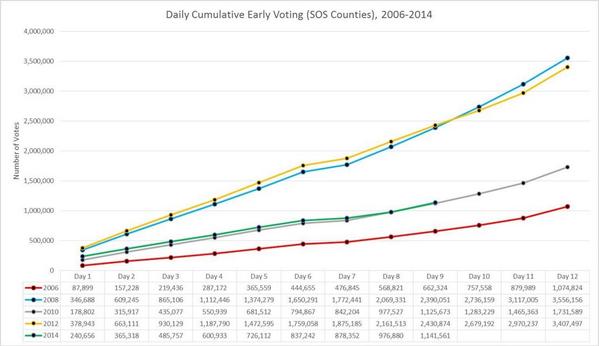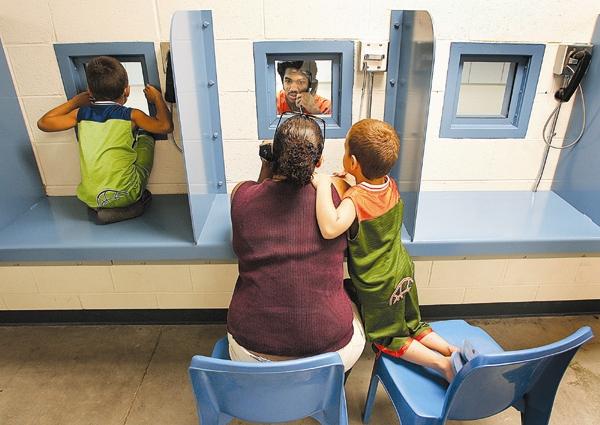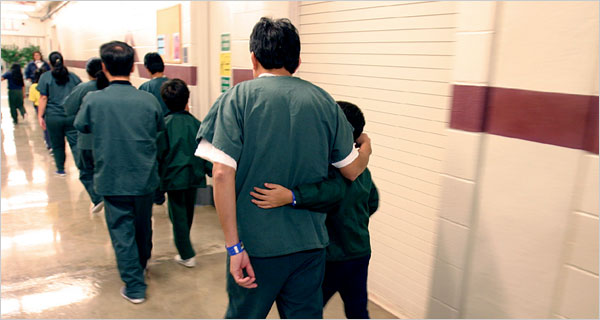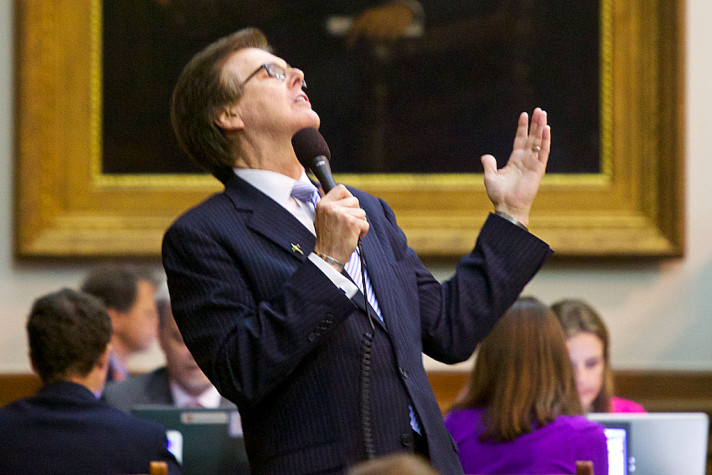
If Wendy Davis and the rest of the Democratic slate of statewide candidates have any chance of defying the polls, or even doing better than the disastrous (for Dems) year of 2010, they’ll probably need a large number of voters to turn out to the polls. We’ve written this story many, many times: The Achilles’ heel for Texas Democrats is that their voters don’t show up. Texas has some of the worst voter turnout numbers in the nation and that abounds perpetually to the Republicans’ advantage. This election cycle was supposed to start changing that. A year and a half ago, Battleground Texas—the hyped Obama-style grassroots machine—came here promising to launch a multi-year effort at rebuilding the Democratic apparatus largely by expanding the electorate and deepening engagement with neglected communities and constituencies, especially with Latinos.
Well, we’re more than a week into early voting. How are Davis and Battleground Texas doing? It’s probably still too early to reach any definitive conclusions but the tentative answer so far is that turnout does not look all that different from 2010, the last mid-term election and a horrible year for Texas Democrats, when Bill White lost by 13 points to Rick Perry and Republicans won so many seats that they secured a super-majority in the Texas House.
The total number of people voting early barely tops 2010. Despite a bump in registered voters and significant population growth, only about 16,000 more people have voted in the first nine days of early voting this year compared to the last mid-term in 2010.

The conventional wisdom is that’s bad for Democrats, though the Davis campaign says there’s reason for “cautious optimism.”
“Of course higher turnout is generally better,” said Jeff Rotkoff, a Democratic operative who advises Steve and Amber Mostyn, the Houston couple who are among the biggest donors to Texas Democrats. “But counties don’t vote. People do. In Harris County we’re not focused on the overall percentage turnout, but rather on who is voting. And that while it looks like Republicans carried the first week of early voting in person, that we carried the weekend and Monday.”
Battleground Texas says its volunteers knocked on the doors of 300,000 people over the weekend alone. “We’re encouraged by the support we’ve seen to date, and we expect our voters to increasingly make their voices heard at the ballot box as they continue to hear from our 33,000 grassroots supporters on the phones and at the doors,” said Jenn Brown, executive director for Battleground.
In Texas’ 15 most populous counties, voter turnout (the percentage of registered voters making it to the polls) so far is actually down by almost 6 percent, compared to 2010. And that gap has been growing with every day. A number of big urban counties are posting anemic numbers: Dallas, Bexar, Travis and El Paso all have lower voter turnout than four years ago. Perhaps most ominously, 5,000 to 8,000 fewer voters are showing up to the polls every day in Harris County, the state’s biggest county and a natural target for progressives looking to establish an anchor for statewide candidates.
In 2010, 13.5 percent of registered voters had cast a vote at this point; this year, it’s about 12.7 percent. Democrats are quick to point out that the number of registered voters has increased, but even by raw vote totals Harris County, which is now 70 percent minority, is in a sad way. In 2010, a little under 295,000 people had voted in the first eight days of early voting; in 2014, it’s dropped 15 percent, to 252,000.
Democrats say just focusing on turnout is simplistic. “In Harris County we’re not focused on the overall percentage turnout, but rather on who is voting,” Rotkoff said.
Battleground Texas says its internal analysis shows that the electorate consists of more Democratic-leaning voters. Through Monday, African-Americans made up .8 percent more of the early vote electorate compared to 2010. Hispanics made up 2.2 percent more.
Meanwhile, there are major parts of the state where voter turnout is looking good: Tarrant (Fort Worth), Collin, Denton and Hidalgo (Rio Grande Valley) are all posting double-digit gains, which may have a lot to do with local dynamics. In Fort Worth, the only truly competitive state Senate seat—Wendy Davis’ district—is up for grabs. Denton voters are deciding whether to ban fracking. And Hidalgo County voters are considering a hospital district. Collin County, which has seen a 22 percent increase in the number of voters, is one of the most hardcore suburban GOP counties in the state. On the other hand, turnout is down in the heavily GOP suburban counties of Williamson and Montgomery.
“The data isn’t 100 percent clear, but it is clear that turnout seems to be lagging,” said Karl-Thomas Musselman, an Austin-based Democratic political consultant, “and I think it’s helping Rs more than Ds.”
There are three more days of early voting left, including today, as well as Election Day. Perhaps turnout could surge. Perhaps the GOTV efforts we’ve heard so much about are paying dividends that are hard to discern in the public data. But at this point, statewide Democrats will probably need a turnout miracle to keep the dream alive.









